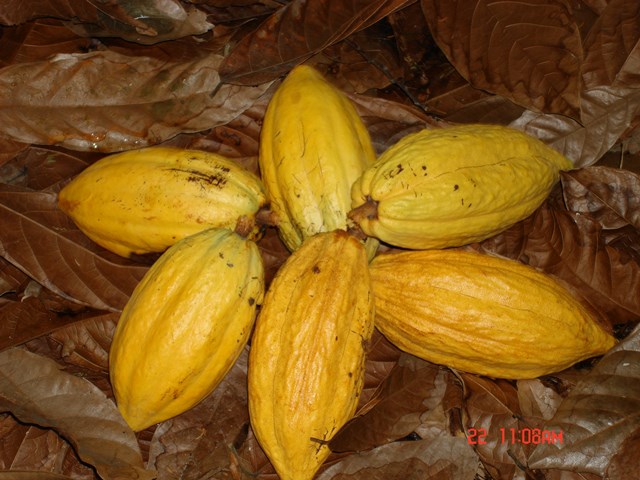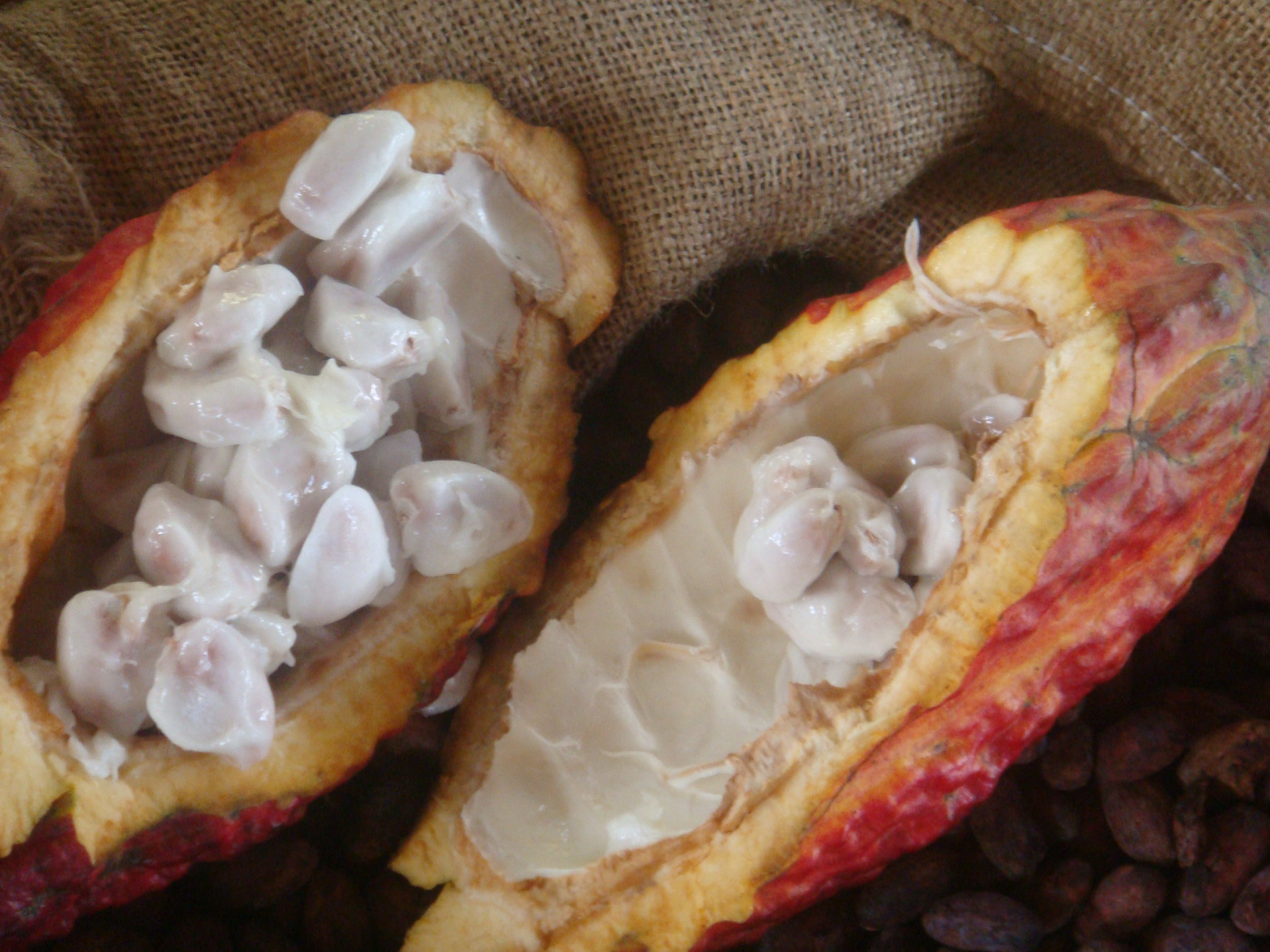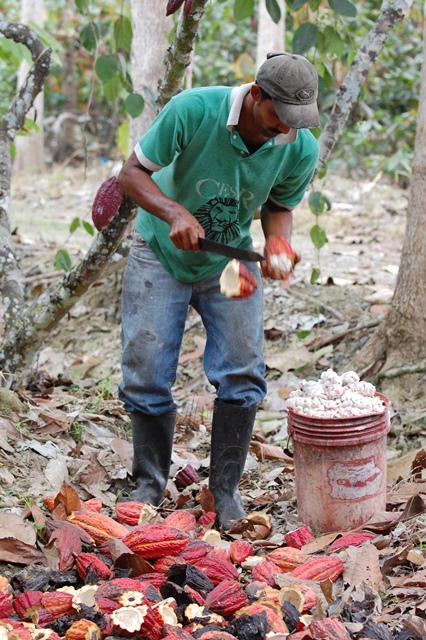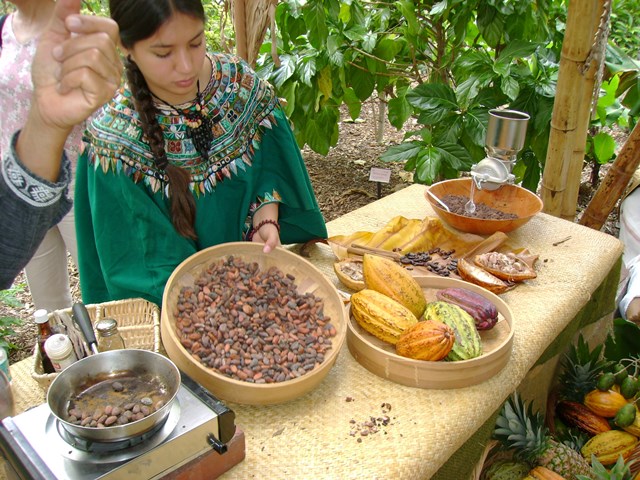How to Grow Cacao Trees: Making Cacao Growing a Piece of Cake

Chocolate really does grow on trees, although not as little chocolates wrapped up in foil. Chocolate comes from the seeds of the understory tree Theobroma cacao, a tropical rainforest species closely intertwined with the needs of mankind. Cocoa cultivation began in the Americas by the hands of the Maya in Central America, ca. 1500 BC. The Maya attributed divine origin to cocoa, being brought down from heaven by their God Quetzacoatl. The cocoa beans were so precious in fact that they were used as a currency.
Cacao plants are now cultivated in rainforest habitats throughout the tropics. Shaded agro ecosystems such as cacao provide a promising means of bring the challenges of creating forest-like habitat for tropical biodiversity in a rapidly deforested landscape, while simultaneously providing a lucrative crop for the agricultural communities.

Cacao is one of the most environmentally sustainable tropical food crops. Cacao today still thrives throughout most of the lowland tropics sharing their needs with diverse mixture of shade trees. Because of cultural tradition, economic necessity, and crop biology, cacao is grown beneath larger trees that form a shade canopy, creating a closed, forest-like habitat within the typically open, degraded agricultural landscape. Though the management of this shade canopy can vary tremendously from crop to crop and within a crop type, the presence of a shade canopy generally provides some benefit to the farmer, while improving the ability of these agricultural habitats to harbor a diverse array of flora and fauna with a biodiversity-friendly cacao.
Feel good consuming chocolate, particularly if you consume products that help sustain communities and natural resources such as rainforests.

The fruit of the cacao tree is a pod that contains a sweetish pulp that clings tightly to the seeds. The pulp is eaten as a dessert and serves for juices, both fresh and fermented. The seeds or “beans” are fermented while still in the pulp, dried, roasted and processed into cocao, the raw material for chocolate.
Growing Cacao In South Florida
Cacao trees grow and bear fruit in a band 20 degrees north and south of the equator. They thrive on tropical rains and partial shade. A thick layer of leaf litter or compost and a still, moist environment is ideal for the cacao tree. Cacao can be grown in South Florida given attention to a few specific conditions.
Picking a Location for Cacao
Select an area protected from wind and providing partial shade. The richest organic soil in your home garden should be devoted to your cacao plant for optimal conditions. The soil should be moist, but not water-logged, as this will cause disease on the roots and the developing pods of your plant. In absence of a rich organic soil a large hole can be dug and filled with a mixture of peat moss and sand. This will allow for proper root development and health of the plant.
In your home garden the cacao tree will take up to four years to begin to bear fruit. The time from flower pollination to a fully developed pod is from five to seven months. The pods come in a rainbow of colors from green to yellow, red and purple. Some pods are striped with two and even three colors at full maturity. There could be no easier display than an eye-catching grouping of cacao pods on a simple table.
Selecting a Tree
Cocoa plants can be purchased from local specialty nurseries in Florida; however, they are usually seedling plants. Seedling cacao plants may be self-incompatible, and their flowering will result in little or no pod production. It is a good idea to plant multiple plants to increase pollination and the chance of fruit production. There are self-fruitful types of cacao that will bloom and fruit in isolation, but these are not generally available in South Florida at this time.
Cold Protection
Cold protection must be provided for young trees by covering the entire tree with a blanket or with the use of a large cardboard box. Even with protection, the leaves of the cacao tree will develop brown leaf edges during the winter and Spring months due to cold, low humidity and winds. Thoroughly watering the area around your tree on the day of cold danger will also help to protect it. The well-watered soil will absorb more solar radiation than dry soil, radiating heat during the night.
Pruning
Pruning for height control may be necessary if all goes well. Pruning should be done at the end of the summer to prepare the tree for the following crop.
Fertilizing
A granular fertilizer like an 8-3-9 or similar formulation should be applied in June and August. The granular fertilizer should be spread lightly below the drip line. A foliar minor element spray and iron drench can be done in June and August to improve the growth of the tree.

How to Make Chocolate from Scratch
1. Harvest
Harvest mature cacao pods and scoop out the seeds. The cacao beans will be covered in sweet and fruity pulp.
2. Fermentation
Pour the seeds in water for 3 days for fermentation.
3. Drying
Remove the water and dry the seeds in the sun. The drying process takes 1 week, and during that period the color will change from reddish brown to dark brown.
4. Roasting
Cacao beans can be roasted in your oven at home. The temperature and time of roasting affects the flavor and color of the chocolate. Start with a roast at 425 degree s Fahrenheit for 7 minutes, then 325 for eight minutes, and finally 260 degrees for 10 minutes.
5. Winnowing
Let the beans cool and separate the beans from the hulls. Remove the husk from the chocolate. You will need to first crack the cacao bean and then blow the husk away.
6. Grinding
Place the beans in a coffee grinder. You will continue to pass the nibs through the grinder to remove more husks and refine the chocolate. After just a few moments the beans will be reduced to cacao paste. Keep it at room temperature in a plastic container.
This is the base for any chocolate recipes.
This article was written by Noris Ledesma and originally published in the Miami Herald. Noris Ledesma is Curator of Tropical Fruit at Fairchild Tropical Botanic Garden. Minor changes from the print version of this article were introduced to improve readability in a digital format.
